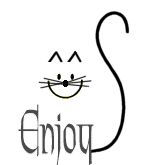
Saints in Limbo
by River Jordan
WaterBrook Press, 2009, 352 pp.
Saints in Limbo by River Jordan is a prime example of why I love to read. Every hundred or so perfectly acceptable, entertaining, thrilling, inspirational books - with a half dozen real duds thrown in for good measure - you come upon a true gem. They are the ones you search for, wait for and hold your breath for as you read that first page, those first words, that first chapter. I had this feeling from the beginning paragraphs of Barbara Kingsolver's Poisonwood Bible. It was the feeling that the words were so perfectly chosen, the descriptions and dialogue so clear and true that I could truly "experience" the book. It's true that certain books will click with certain people based on their background and preferences, however I think there is more to it than that. I think there is an art to stringing together the right words so that ink on a page comes alive and almost approaches a kind of poetry. Am I gushing? Well, yeah, I would admit that but I really think this one is worth it. There are strong, sassy women and humor, magic and suspense. This is a sweet story that never approaches saccharine. It has a moral but it does not preach. Although I mentioned The Poisonwood Bible, I can truly say that part of the charm of this work is that I cannot think of any book I have ever read that was quite like it. If you like good storytelling I recommend that you not miss this book.









